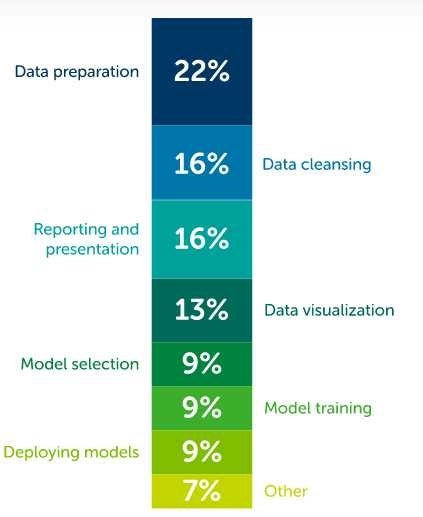
Data preparation is a critical step in the data management process, as it can help to ensure that data is accurate, consistent and ready for modeling. In this guide, we explain more about how data preparation works and best practices.
Jump to:
- Data preparation defined
- Why is data preparation important?
- Data preparation steps
- Data preparation tools
Data preparation defined
Data preparation is the process of cleaning, transforming and restructuring data so that users can use it for analysis, business intelligence and visualization. In the era of big data, it is often a lengthy task for data engineers or users, but it is essential to put data in context. This process turns data into insights and eliminates errors and bias resulting from poor data quality.
Data preparation can involve a variety of tasks, such as the following:
- Data cleaning: Removing invalid or missing values.
- Data transformation: Converting data from one format to another.
- Data restructuring: Aggregating data or creating new features.
While data preparation can be time-consuming, it is essential to the process of building accurate predictive models.
Why is data preparation important?
Data scientists spend most of their time preparing data. According to a recent study by Anaconda, data scientists spend at least 37% of their time preparing and cleaning data.

The amount of time spent on menial data preparation tasks makes many data scientists feel that data preparation is the worst part of their jobs, but accurate insights can only be gained from data that has been prepared well. Here are some of the key reasons why data preparation is important:
Delivers reliable results from analytics applications
Analytics applications can only provide reliable results if data is cleansed, transformed and structured correctly. Invalid data can lead to inaccurate results and cause data scientists to waste time trying to fix issues with the data.
SEE: Prepare for AIOps by preparing your data (TechRepublic)
Data preparation can help identify errors in data that would otherwise go undetected. These errors can be corrected before they impact the results of analytics applications.
Supports better decision-making
The data preparation process can help to improve the quality of data, leading to better decision-making across departments and projects.
Reduces data management and analytics costs
Organizations can reduce the costs associated with data management and analytics by automating data preparation tasks.
Avoids duplication of effort
Data preparation can help to avoid duplication of effort by ensuring that data is consistent and accurate. This saves time and resources that would otherwise be spent on data cleansing and data transformation.
Leads to higher ROI from BI and analytics initiatives
A well-executed data preparation process can improve the accuracy of insights, which can lead to a higher ROI from BI and analytics initiatives.
Data preparation steps
The data preparation process may vary with each organization and engineer. However, there are six main steps in the data preparation process:
Data collection
The first step in the data preparation process is data collection. This step involves gathering data from various sources, such as internal databases, external sources or manually inputted data. Once all relevant data has been collected, it can be processed.
Data discovery and profiling
The second step is data discovery and profiling. The collected data is explored in this step to understand its content and structure. This includes identifying any issues with the data, such as missing values or inconsistencies. Once understood, the data can then be cleansed.
Data cleansing
Data cleansing involves correcting any errors or issues identified in the previous step. This may include filling in missing values, standardizing formats or removing duplicate entries. Once the data has been cleansed, it can then be structured for use.
Data structuring
The fourth step in data preparation involves organizing data into a format that can be easily accessed and used. This may include creating databases or tables, defining attributes or variables, or setting up hierarchies. Once the data has been structured, it can be transformed and enriched.
Data transformation and enrichment
In this step, data is transformed into a format that can be used for analytics or decision-making. This may include converting text to numerical values, aggregating multiple entries into one record or adding new information to records.
Data validation and publishing
The final step in the data preparation process is data validation and publishing. In this step, the transformed data is checked for accuracy and completeness before being published for use. This may include running tests or verifying results against known values. Once published, the data is ready to be used for analytics or decision-making.
Data preparation tools
Data preparation is a time-intensive task that many people would avoid altogether if they had a choice. Fortunately, many data preparation tools are available that can help make the process simpler, automated and less time-consuming.
Most of these tools work by running datasets through a pre-determined workflow that applies the data preparation steps we have already outlined. A graphical user interface makes it easy to locate and apply these steps.
Some tools are simple enough to be used by non-IT people to source, shape and clean up data, while others are enterprise-level tools that are best for skilled data engineers. Ultimately, your choice of data preparation tool will depend on your specific needs and requirements as well as the skillsets of your team.

